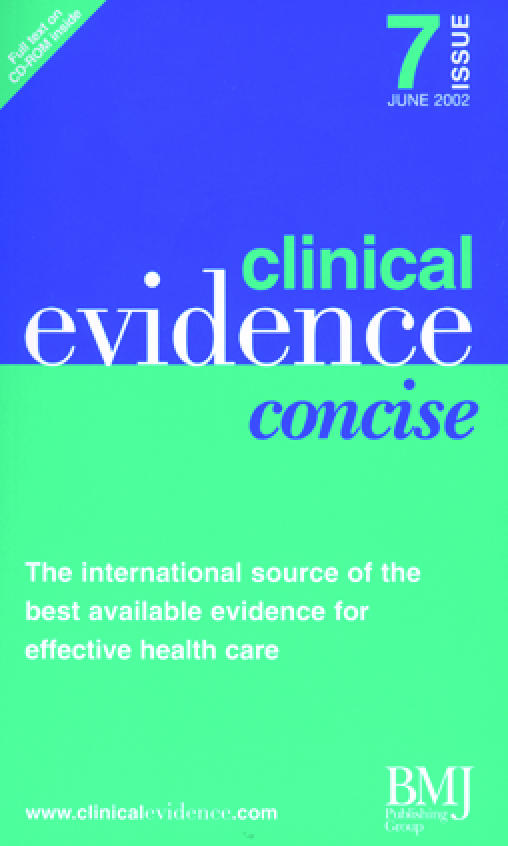Definition Vulvovaginal candidiasis is symptomatic vaginitis (inflammation of the vagina), which often involves the vulva, caused by infection with a Candida yeast. Predominant symptoms are vulvar itching and abnormal vaginal discharge (which may be minimal, a “cheese like” material, or a watery secretion). Differentiation from other forms of vaginitis requires the presence of yeast on microscopy of vaginal fluid. The definition of recurrent vulvovaginal candidiasis varies among RCTs, but is commonly defined as four or more symptomatic episodes a year. This summary excludes studies of asymptomatic women with vaginal colonisation by Candida species.
What are the effects of treatments for symptomatic vulvovaginal candidiasis in non-pregnant women?
Beneficial
Intravaginal imidazoles
RCTs have found that intravaginal imidazoles (e.g. clotrimazole) versus placebo significantly reduce persistent symptoms of vulvovaginal candidiasis after 1 month (NNT 3). RCTs found no clear evidence that effects differ significantly among the various intravaginal imidazoles. RCTs found no clear evidence of any difference between shorter and longer durations of treatment (1–14 days).
Oral itraconazole
One RCT found that oral itraconazole versus placebo significantly reduced persistent symptoms after 1 week (NNT 4). One systematic review has found no significant difference in persistent symptoms in the short term with oral itraconazole versus intravaginal imidazoles.
Likely to be beneficial
Oral fluconazole
We found no RCTs of oral fluconazole versus placebo or no treatment. One systematic review has found no significant difference in persistent symptoms in the short term with oral fluconazole versus intravaginal imidazoles. RCTs have found that fluconazole is associated with increased frequency of mild nausea, headache, and abdominal pain (NNH 11 after 2 weeks).
Intravaginal nystatin
One RCT found that intravaginal nystatin versus placebo significantly reduced the proportion of women with a poor symptomatic response after 1 week (NNT 3).
Trade off between benefits and harms
Oral ketoconazole
We found no RCTs of oral ketoconazole versus placebo or no treatment. RCTs have found no significant difference in persistent symptoms with oral ketoconazole versus intravaginal imidazoles, but ketoconazole significantly increased the frequency of minor adverse events (mainly nausea). Case reports have associated ketoconazole with a low risk of serious fulminant hepatitis (NNH 12 000).
Unknown effectiveness
Treating a male sexual partner
RCTs found no clear evidence that treating a woman's male sexual partner significantly improved resolution of the woman's symptoms or reduced the rate of symptomatic relapse.
What are the effects of treatments in non-pregnant women with recurrent vulvovaginal candidiasis?
Likely to be beneficial
Oral itraconazole
One RCT found that oral itraconazole versus placebo significantly reduced recurrence over 6 months (NNT 4).
Trade off between benefits and harms
Prophylaxis with intermittent or continuous ketoconazole
One RCT found that oral ketoconazole (given either intermittently or continuously at a lower dose) versus placebo significantly reduced symptomatic recurrences over 6 months (NNT 2–4). Ketoconazole is associated with an increased frequency of gastrointestinal adverse effects, and case reports have associated ketoconazole with a low risk of serious fulminant hepatitis (NNH 12 000).
Unknown effectiveness
Regular prophylaxis with oral fluconazole
We found no RCTs about the effects of fluconazole in preventing recurrence of vulvovaginal candidiasis.
Regular prophylaxis with intravaginal imidazole
RCTs comparing regular prophylaxis with intravaginal imidazole versus placebo found inconsistent effects on the proportion of women with symptomatic relapse. One RCT found that regular prophylactic intravaginal imidazole versus treatment at the onset of symptoms reduced the frequency of episodes of symptomatic vaginitis, but the difference was not significant. The RCTs were too small to exclude a clinically important benefit.
Acknowledgments
The full content of Clinical Evidence is available online (www.clinicalevidence.com); topics are updated every eight months.
Footnotes
Search date November 2001
 Clinical Evidence (www.clinical evidence.com) is a compendium of the best available evidence on common and important clinical questions
Clinical Evidence (www.clinical evidence.com) is a compendium of the best available evidence on common and important clinical questions


